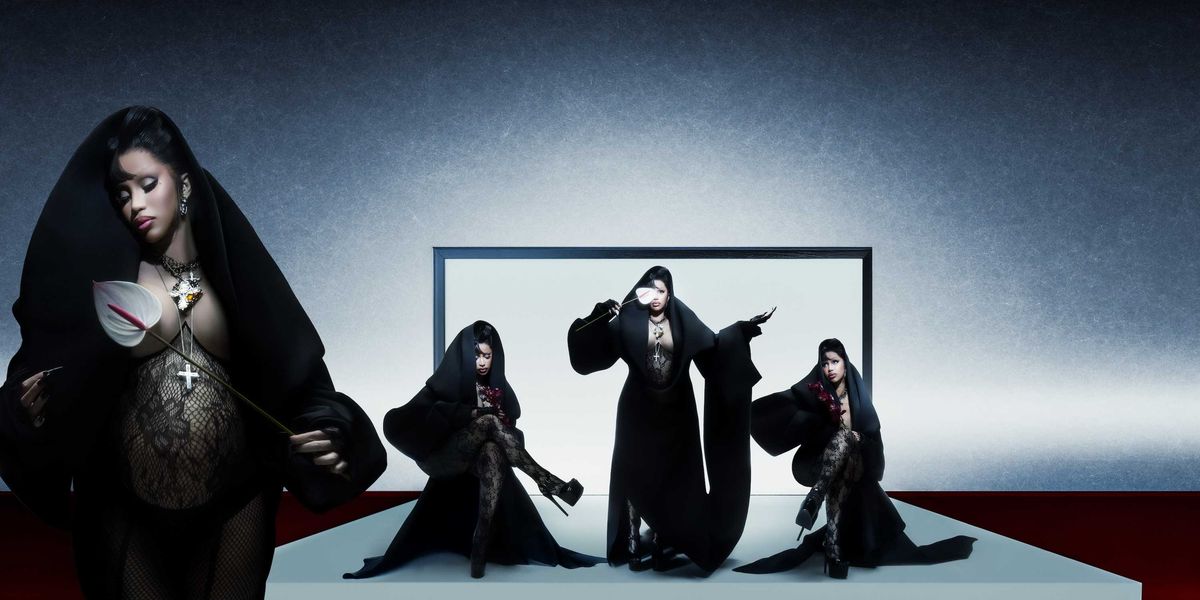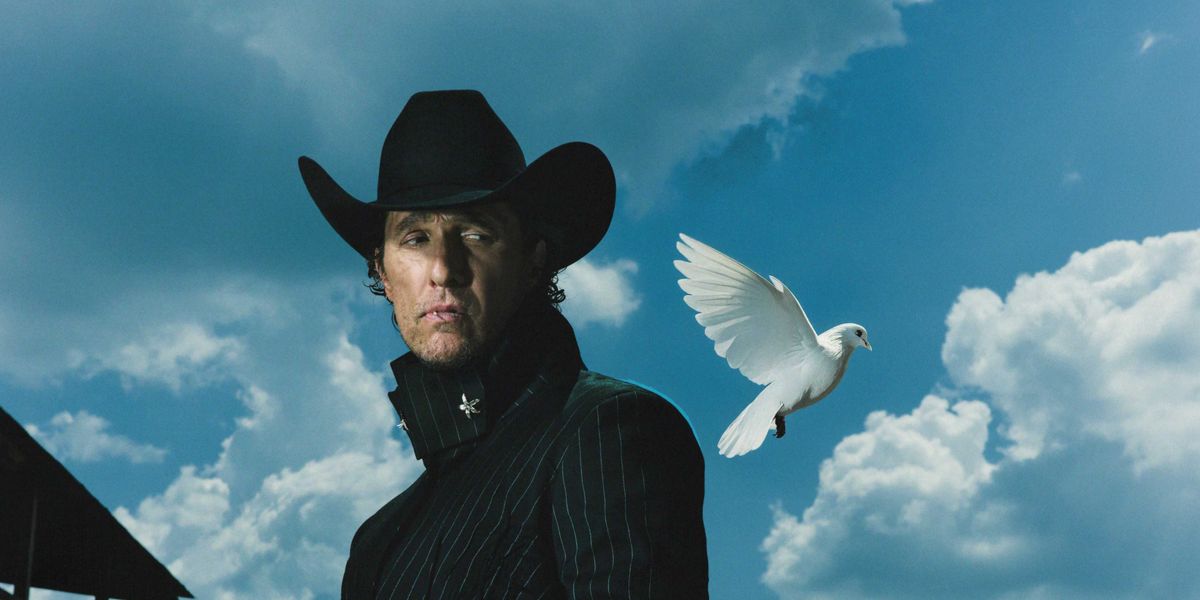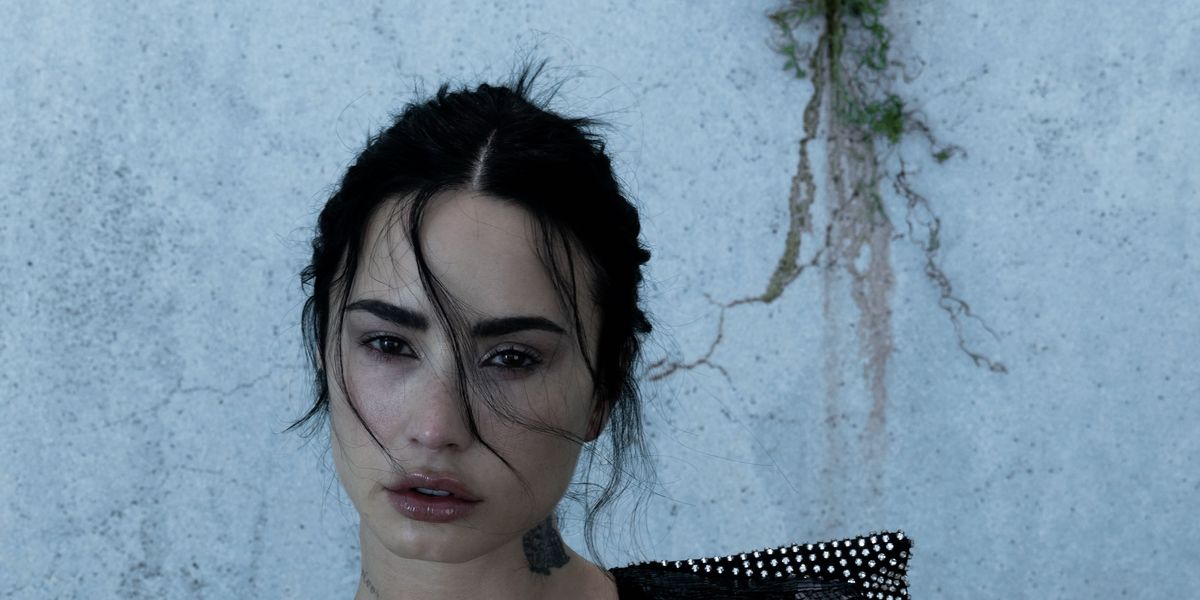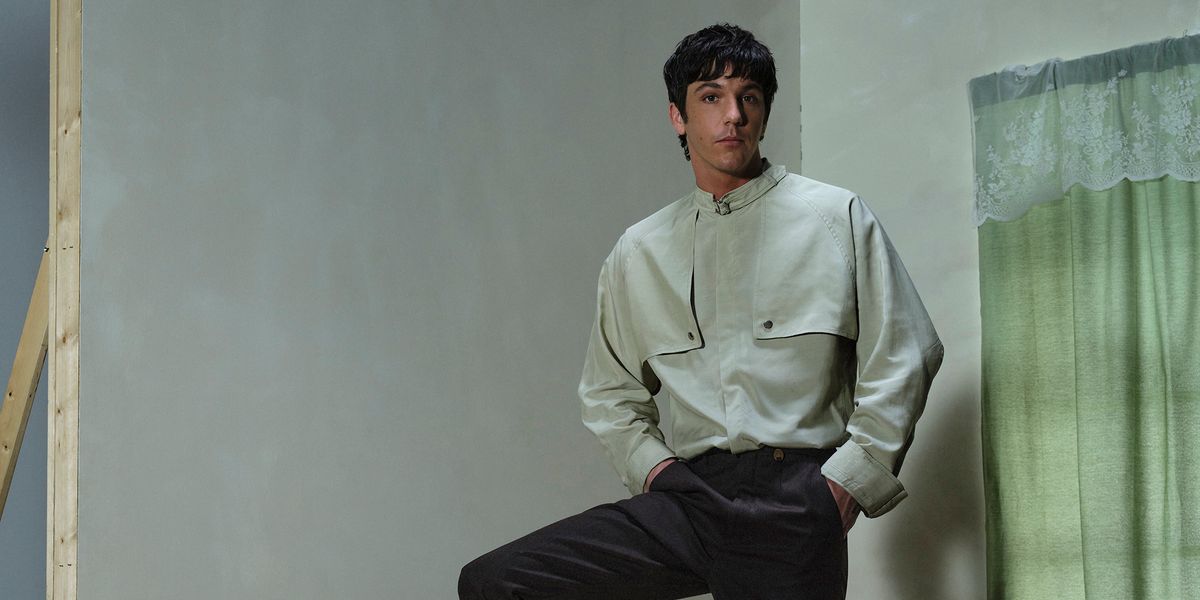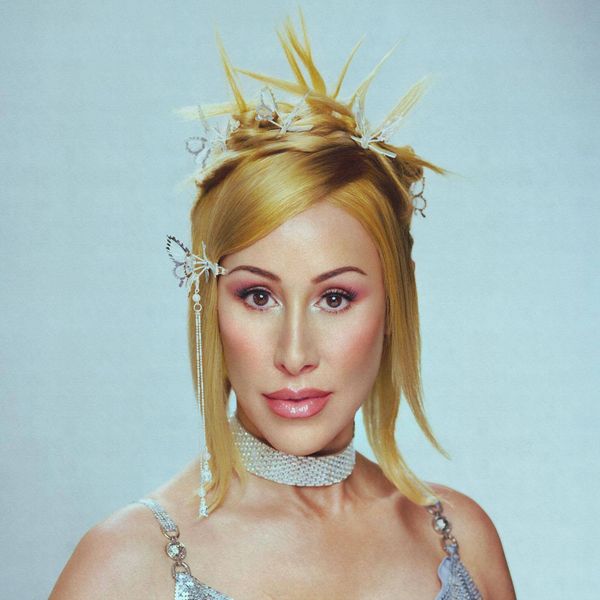
Angie Katsanevas and Her Lunatic Fringe
Story by Joan Summers / Photography by Gustavo Chams
Nov 18, 2025
Angie Katsanevas has always felt like the black sheep, which feels fitting, seeing it was her singular personality and landmark fashion sensibilities that made her the breakout star of The Real Housewives of Salt Lake City.
But well before she made a name for herself on television, she was the co-founder of Lunatic Fringe alongside her husband Shawn, an off-beat salon and internationally recognized hair artistry institution. “It was 1999, and the definition of ‘lunatic fringe’ was a group of like-minded people working towards the same goal or vision. I thought, It's so cool, because it makes a statement without even using the word salon.
Growing up without a mother, surrounded by brothers and sisters and a working single dad, Katsanevas felt confined to the fringes of her immigrant Greek community. She was creative and outspoken and fashion-minded at a time when girls were told to be anything but. “When you're an immigrant's child, there's a lot of: We don't do this. We don't do that. We don't dress this way. We don't act this way. We're quiet. We're not outspoken. We don't have these super strong opinions.”
That did not stop her from picking up the clippers as a young girl and accidentally shaving her own eyebrows off, or mistakenly applying nail polish to her lips, mesmerized by the way it transformed her face. She laughs while recounting the tale. “Trying to become a young woman, for me, without a mother, was very interesting, I learned a lot along the way. It was quite a journey.”
PAPER readers will know that Katsanevas’ striking personality and enviable wardrobe has made her a fixture of our weekly Bravo fashion column, So Chic, Very Chic. Fitting, then, that we teamed up with longtime Lunatic Fringe partner Kérastase to recreate the very looks she once pioneered as a young stylist in Salt Lake City. Having grown up in a hair salon myself, it’s not just the childlike wonder that drew me to Katsanevas during her first appearances on television. It’s that, in her, I remembered the many different types of women I thought I could be growing up, sitting behind the desk of my grandmother’s salon, flipping through the catalogues of the cutting edge styles for women in 1997, or 2002.
Katsanevas knows chunky highlights, “shag” blowouts and stacked bobs better than anyone — and it was Kérastase that helped make it happen for her, back when even the women of Salt Lake City wanted to look like a ‘90s supermodel or a leading lady on Friends.
From the fashion secrets from her childhood to the many gay friends who’ve inspired her and the kind of woman she wanted to be growing up in a world she felt so different in, Angie Katsanevas is the fearless leader of her own lunatic fringe.
This interview has been edited and condensed.

Kérastase Mousse Bouffant and Kérastase Elixir Ultime
You were a hairdresser before Lunatic Fringe, and I'm assuming, that is also when you were a manager at Contempo Casuals? Tell me the timeline of this work history. I'm so curious.
Yeah, I got a job at Contempo when I was 18, for Christmas. It was like a temporary Christmas hire, but because I was such a hard worker, they kept me on, which was so amazing. I started out at $4, no, $4.10 an hour, and then I got put into management and they bumped me up to $6 an hour as an assistant manager when I was 19. I worked there for a year and a half. I was so responsible, and I loved fashion!
I spent my entire paycheck on clothes from there just so I could look the part and invest in myself. Then I started beauty school shortly after that.
So, fashion and hair have always been a thing for you.
When I was 10, my older sisters would have me do their hair. I always loved makeup, nail polish. With my mom passing at eight years old, I never had access to any makeup around the house, or at that point, really any jewelry or dress up dresses, anything. So I found a bottle of nail polish and I painted my lips with the nail polish, and I was just staring at myself.
My dad would do our hair, so we didn't get to go to high-end luxurious salons. We didn't have cute hair, because my dad had seven kids and he had to just manage our hair. So it was simple, right? We had these “little boy” short haircuts, and he did them in the backyard with buzzers. So that's how I knew you got a haircut with clippers.
We didn't have access to anything girly, princessy, anything to feel cute or feminine. So I found that bottle of nail polish, and I painted my lips, and I just stared in the mirror. I had my little boy cut, my little pixie bangs and short hair — someone could confuse me for a boy. But when I put that nail polish on my lips, I felt so cute, and I just stared at myself. I couldn't believe it! It just made my face light up, and then it was time to get it off, and I didn't have anything, so I had to use a nail file to file it off.
Then the other funny thing that I just have to add: haircuts for us were at home, and we'd sit on a little mini ladder, and my dad would cut our hair. I wanted bangs one day, and I thought, Well, I want it at the level of my eyebrows. So I took my dad's buzzer and I just went across, and then I brushed it away and I had buzzed off my eyebrows! So trying to become a young woman, for me, without a mother, was very interesting, I learned a lot along the way. It was quite a journey.
So many women have memories of watching their moms get ready. I still use the Mac “Twig” lipliner like what my mom wore.
Same! It’s the best.
Sure, it looks like the nineties, but it reminds me of my mom and when I wear it, I feel connected to her. You lost your mom at such a young age. Did you retain anything from her like that, or did you ever feel connected to her with the way you did your hair or makeup or dressed, or did that all fall on your dad?
Actually, I do have a lot of memories of my mom — She loved to get dressed up, and it was a rare occasion, because she was a stay-at-home, and she usually walked around in a house dress with flowers and no makeup and her hair not done. But that was an era that women would get what we call a shampoo set, or a beehive. So she would go to a beauty college and get her hair set when her and my dad would go out, and she would paint her nails and she would put on jewelry, makeup, dresses. This was the seventies, it was the disco era. There were a lot of sequins I remember, and chandelier earrings and over the top jewelry. And even though my parents didn't have a lot of money at that time, whenever my mom dressed up, she looked really beautiful and she'd walk out and you could tell she felt beautiful, because that was few and far between for her, to get her hair and makeup done and go out, and most of her dresses were made.
There was a woman in Salt Lake City, a Greek woman, that would make beautiful dresses for a lot of these ladies. And so she didn't go out in denim. She went out in a beautiful dress. It looked like she was going out somewhere in Las Vegas, and very over the top jewelry. And she’d come out with either dark chocolate brown lips or hot pink lips. I always remember that. And she had gorgeous skin, and I just remember thinking she looked beautiful, and you could tell she felt so good getting ready. So it was rare, but she loved it. She loved it.
It's interesting hearing you talk about the shampoo sets. I mentioned my grandma had a salon, Looking Good Salon.
Oh, I love that. We have a Looking Good in Salt Lake.
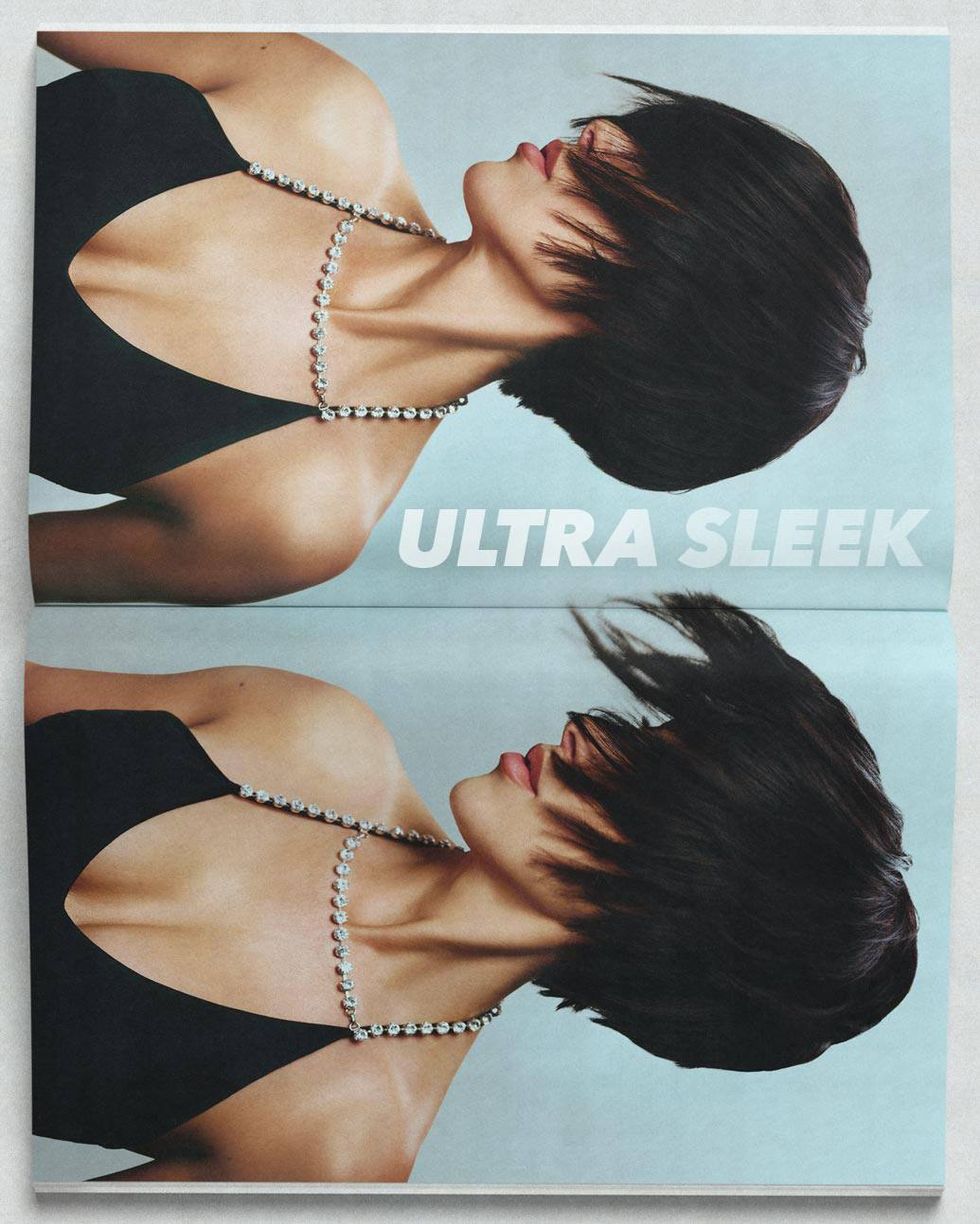
Kérastase Mousse Bouffant and Kérastase Elixir Ultime
I would go in and I would watch all of the women get their shampoo sets on the clock every week. People don't do that anymore, where they go and get their hairstyle for the week, sleep in a net, sleep in curls.
I mean, we have women that come into the salon multiple times a week to get their hair blown out, be pampered and get self-care. Self-care just wasn't a thing in that era. I also think they were busy, and so getting their hair done once a week left time for them to be in the kitchen cooking and baking, and that was a generation where women stayed home and men went to work. So it makes sense. When I trained in beauty school, shampoo sets were a thing. I had to learn to do them. I had little women that would tip me a dollar and they'd come in once a week. And my husband and I bought the cosmetology school that we went to, and after, we started offering the women that were the few shampoos left from that era free weekly shampoo sets for the rest of their life.
Angie, you just opened up a world of questions. You mentioned that you and Shawn went to the same cosmetology school. So is that where you met then?
I was going into a salon where Shawn was a hairdresser, and I was 19, and I told him I wanted to go to beauty school, so he recommended the school that he went to, and I went to school there as well. When I became an assistant at his salon that he worked at, that's when we started dating. And then once we ended up moving into the school world, we bought that school for the accreditation and changed the name and opened a new school.
Why did you first make the choice to go to beauty school? Was it something that you knew you wanted as a kid, or did it come up by chance?
It's so interesting. When I was 12, I was in shop — I took the class knowing I'd be the only girl. I was boy crazy, and I loved being with the boys. So I was in shop and the teacher made us go around and say what we wanted to be when we grew up. I had recently read about a cosmetologist, and I learned that that was a hairdresser. I couldn't ever really retain information in school, but if you handed me a fashion magazine about hair, makeup or fashion, I would get sucked into it. I would remember every word that I read. When I learned the word cosmetologist, I thought: That's what I want to be when I grow up.
I can't believe that my dream came to fruition. I loved hair fashion and all things beauty. I loved makeup. And my sisters used to tell me that I should be a hairdresser. I wasn't a great student in school, and my other sister was — I had three sisters. I said, well, you guys just think I should be a hairdresser because you think I'm dumb! I can't believe I said that, but I thought: They think I can't do anything else. So I went to college for six months, not beauty school, but college. I found myself still cheating on my neighbor's paper. What am I doing? I need to go to beauty school.
I jumped in both feet with both feet. I fell in love with the industry. I fell in love with people. I was in trouble my entire life in school for talking too much, which I'm doing right now! And I was able to join an industry where I could be creative. I could be the black sheep that I was. I could dress edgy and fashion forward, and I could talk to people and be warm and friendly and create looks for people. I made a living out of it! It was mind blowing that I could do something that I love so much.
People have a pretty specific idea of what Utah is, and what the culture is in Utah. But then you came onto the scene. You have this salon called Lunatic Fringe, and I'm seeing these old photos of you with these incredible haircuts, partly which formed my inspiration for this shoot.
I can’t wait to talk about that.

Kérastase Mousse Bouffant and Kérastase Elixir Ultime
Angie, honestly, I looked at you and I was like: She so off the beaten path of what I would imagine the Salt Lake City woman, or the Utah woman, to be. Growing up, did you feel different from other people, or did you feel a bit like an outsider because of your interest in clothes and fashion?
That almost kind of brings tears to my eyes, because growing up here, my parents were immigrants. I grew up surrounded by LDS families, Mormon families, so I immediately felt different. The families were wonderful. They were inclusive, loving, kind neighbors. I still have great bonds and connections with the friends I grew up with, but I was immediately put in a position to feel different, look different. I had a strong Greek nose, I had dark hair. I was very dark from being out in the sun all day, and none of my friends looked like me. They didn't eat the same foods I ate. They didn't go to the church I went to.
I experienced feeling isolated at an early age, not having a mother. All the things that my friends had, I just felt like a black sheep. I did have the Greek community, which I was obviously very immersed in, but when you're an immigrant's child, there's a lot of: We don't do this.
We don't do that. We don't dress this way. We don't act this way. We're quiet. We're not outspoken. We don't have these super strong opinions. I wasn't allowed to make a lot of my own decisions. My dad had to keep control of seven kids. I didn't really dare speak my mind, say what I thought, say what I felt. It was inside me, but for an immigrant's daughter of my generation, I was very different. I dressed differently, which some people judged, and viewed it as I was high body count, because of how I dressed. And that was in my own community, by other women that were older than me. But it was really just a way of me expressing myself.
Getting into the beauty industry, part of why I think I really connected with the LGBTQIA+ community, was because in Salt Lake at the time, they were looking for acceptance. I was looking for acceptance. It's a marginalized community in a state that was not diverse at the time, for lack of a better word. It was not very colorful. And it's grown since then — there's been so many amazing changes. But I just felt like I had so many friends back then — they called themselves the gays — and I became part of the group, because we were all looking for a place to belong.
In the beauty industry, there is a lot of acceptance for ways of expressing yourself through fashion or through your hair. You can be bold, you can have tattoos, you can have crazy hair. I feel like a lot of people like myself at that time, and a lot of members of the LGBTQIA+ community, also found it a safe place to be themselves and be expressive. I just felt like I found a home, I found my people.
I want to then get to some of the looks we put you in, which tie into that. My grandma had these hair salon books, like: “99 Crazy Cuts of 1997.” Growing up in a small town, feeling different, feeling outside of things, I would flip through and be like: Look at all these women that I can be, look at all these women that exist in the world, look at all these different haircuts. Then you come on the scene, and you're posting these throwback photos — they reminded me of those times, when people were so expressive with their hair.
I died when I got the call, I was like, Is this real? Pinch me? Those looks now, if you were not from that area, you would not even get it. One of the girls assisting the shoot, she said: Did people really wear their hair like this? And she's early twenties! I just laughed, because I thought, Are you kidding? If you didn't wear your hair like this, you weren't cool!
I have a younger mom, and she would do her hair like Madonna in high school. Piece-y highlights, bobs where it's starting up here in the front and down here in the back. It was spiky — everything was spiky, everything. Everything's up and out. Teased bangs.
Now we're just seeing so much of what we call the Utah curl, or the ringlet-ty beachy wave. And back, then you were so expressive. It wasn't like people were coming in for a root touchup and a blowout. It was like you said, the spiky cut, the crazy poking up hair, the chunks. I mean, it was so fun and it was just such a creative time for hairdressers.
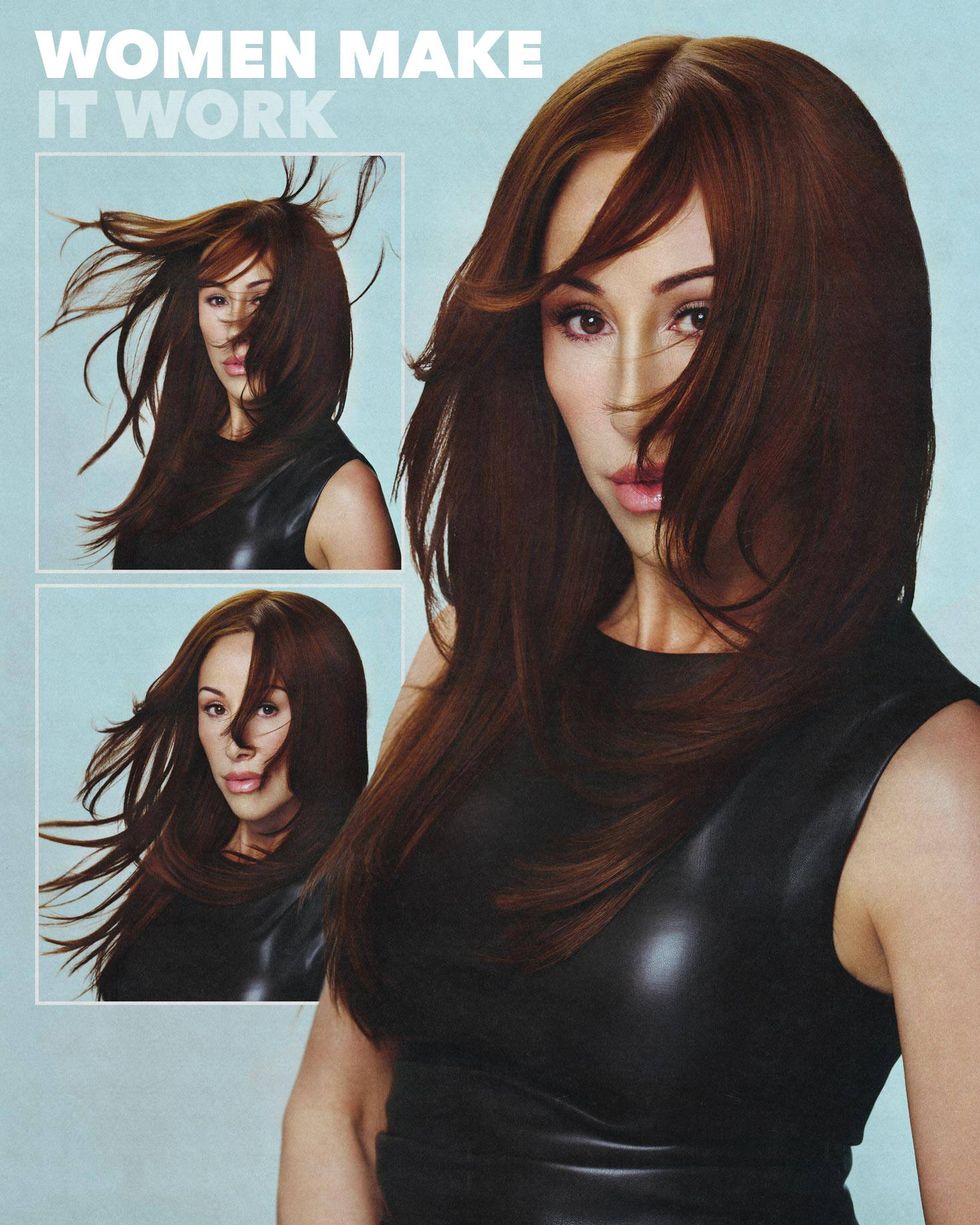
Kérastase Mousse Bouffant and Kérastase Elixir Ultime
Tell me the story of Lunatic Fringe, and where the name comes from?
Shawn and I met in a hair salon that we worked at together. Our boss, who was a mentor, we learned so much from him, and he had said that we should name the salon we wanted to open up together: Lunatic Fringe. His name was Alan, and he was from Australia. And then we Googled it, well not Googled… Sorry, we probably looked in the dictionary back then.
You looked in the Yellow Pages.
Yes, the yellow pages! It was 1999, and the definition of “lunatic fringe” was a group of like-minded people working towards the same goal or vision. I thought, It's so cool because it makes a statement without even using the word salon. Then we got nervous that it was too different. But again, we were always ahead of our time, and it was really a bold move to use that name back then. I'll never forget the first time we confirmed an appointment from one of our guests, she said: “I saw my caller ID and I thought it was my therapist's office calling me. Lunatic, what is this?” But it helped us brand the salon, because it just said everything without saying the word salon. And it's memorable.
Did you always have to do the Utah haircuts, or were you known for more edgy or fashion forward haircuts? What was your reputation back then?
When Shawn and I were in the industry, Friends was out, with Jennifer Aniston and the shag. T was the haircut of that era. So everyone wanted the shag. The other haircut everyone wanted was the stacked, a-line bob.
My mom had that for many, many years.
And round brushing and big, sexy hair were a thing. It wasn't like: Come in, blow your hair out straight and then use a flat iron to melt it down. We became hairdressers when you really had to learn to do the craft in detail, you had to blow the hair out. You had to get volume. We did not depend on curling irons, and we did not depend on flat irons, which made us have to be great hairdressers and perfect our craft. I've seen people do hair where they leave the hair wet, halfway wet and they use the iron to melt it down. A true, beautiful blowout, where the hair looks shiny and like glass, you have to completely dry it. You have to use tension. You have to get volume in there. You have to wait till the hair cools to pull the brush out.
I mean, it's a science and you have to love it. You have to be passionate about it, and you have to do it right. And we were from the generation that had to learn to do it right, because it wasn't one length, it wasn't using irons or hot tools. It was using tools to style hair and create a style that stayed and lasted. And to do short hair and short styles and layering, you had to be good at hair in order to be successful.
The round brush especially was such a staple of my grandmother's salon, and I learned how to use it pretty young. I never adopted a curling iron or a straight iron, because the round brush does everything I want. You get the bounciness, you get the porn hair of the seventies.
The porn hair!
That's what I always wanted, and so I never adopted it, and it's back now, which is good. We're putting down the flat, thin, melted hair.
If you look back at the supermodels of my generation, the Cindy Crawfords, the Christie Turlingtons, Claudia Schiffer, just the most gorgeous supermodels of all time. They had big, full, voluminous, gorgeous, sexy blowouts. And to me, it's timeless and we never look back on those and say they’re cringe. It’s beautiful, it's sexy, it's very feminine, and it's coming back and I love it.
The Freedom ‘90 video is such a staple of beauty for me. Speaking of Kérastase, the round brush allows the product to grab a hold of everything.
I know we used Kérastase, so I can give this shameless plug, but they make a mousse. It's called “Mousse Bouffante.” I've been using it for over 25 years because it holds volume in the hair. And if you want that full, round brush, sexy look, it will hold that shape in the hair. But Kérastase is also now promoting the big, voluminous, gorgeous blowouts, and you're seeing young girls wearing them. Again, to me, it's so gorgeous. It goes with jeans, it goes with dresses. It's elegant, it's sophisticated. There is movement. The hair is not slacked down with a ton of product.
We used all Kérastase products for this shoot, too. I'm curious, you obviously have the brand association with Kérastase on television, but what has been your experience with Kérastase as a hairdresser? Have you always used it? Is it a product you've relied on?
We partnered with Kérastase 27 years ago. We were the first salon in Salt Lake City to have Kérastase. I remember seeing it in Italy with Shawn, when we were on vacation, in a super premium, high-end salon. And I knew it was the best product. When we got it into our salon, I just felt like we had arrived. It was a luxury product, it was a quality product. It worked. It was expensive, but it was a product that was worth the investment. I've had a great working relationship with them, and we've been loyal to them for 26 years.
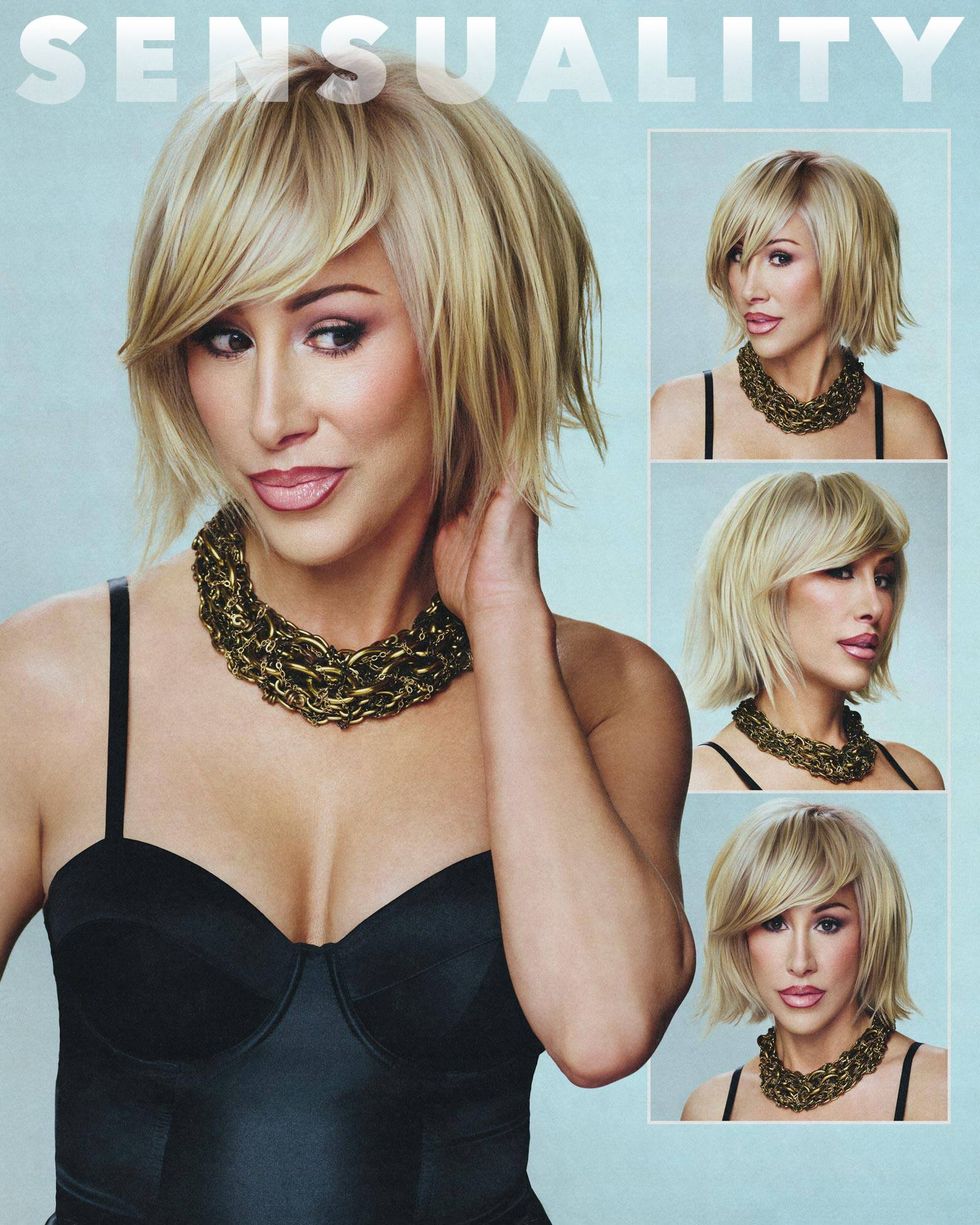
Kérastase Mousse Bouffant and Kérastase Elixir Ultime
The rest of the world, and the country, sometimes has a certain opinion of Salt Lake City and of Utah as a whole. You came onto the scene as a successful business owner, and this hair company that's offbeat and edgy and fashionable. Looking back at how you felt growing up, to where you are now: What does it make you feel, with the woman you’ve grown up to be?
For me, the most rewarding part is that I have provided opportunity and growth for people. I've helped them buy homes, buy cars, put food on their family's table, and I partnered with some incredible people along the way that have helped. I mean, this isn't just Shawn and myself. We have attracted incredible partners, leaders, people that are on our team that have helped us make this dream come true, because they believed in a vision that we had. It's inspiring, it's rewarding. It's really humbling, and I never forget my roots, so to speak.
I've worn every hat in my business. I've been an assistant. I've worked for a dollar a shampoo, I've worked for $2 a shampoo. I've worked for free. I did it all so that I could stay humble and see the perspective of people that are sweeping hair in my salon today. I will never forget that. It took me being almost 52 years old to say: Wow, I'm really proud of myself.
You have also attracted quite a sizable queer LGBTQIA+ fan base as you've said, and it sounds like you've had a relationship to the community for longer than just your time in the public eye. Were you expecting that that would happen when you joined The Real Housewives, and how has your relationship to that community changed or grown since coming into this world?
I saw a funny meme once that said, “I had gay friends before it was cool.” And I was like, that's me. They were my people and it's where I felt comfortable. And my friends used to say, “Oh my gosh, you're a gay man trapped in a woman's body.”
I've said that one too many times in my life too. I definitely can relate.
They just got me, and all my funny one-liners that I say on the show, people say, well, were you always this witty? No! These are things that I would only secretly dare say to my gay friends, but I never dared say them out loud! They just get me, and it was just a place of acceptance. I feel like they too were looking to be accepted in Utah at the time, and we just found each other and it felt like family.
I've always felt different. I've always loved more colorful people that could express themselves and were more free spirited. Part of it is probably because I wanted to be that way, but growing up, it wasn't really accepted in my generation, in my community. So it took a long time for me to become me, and I'm still working on it. I think that's part of life.
So many people use things like hair and makeup and fashion because it can say stuff about ourselves, or it can tell people something about us we don't know how to express ourselves.
May I steal that please? It's so true. I feel like I was just in a therapy appointment and you enlightened me.
What do you think you try to say with the way that you dress, and the way that you style yourself? And what about yourself do you think people learn about you through your sense of style?
Oh my gosh, that is such a great question. I'm very artistic and creative, and I have been since I was little. I feel like clothing and hair and makeup were an outlet for me to express that. Maybe it says I am a lover of all people. I think when you look a little different, you show the world that you're accepting of all things. I know this is crazy, but I saw a boy yesterday — I took my daughter to get Bath and Body Works, and this kid had the most beautiful, long hair, and he had lip gloss on. I just thought, This is just like my daughter's norm. Boys would've never dared do that in Salt Lake City 30 years ago.
I said, “I love your hair,” And he's was like, “Oh, thank you so much.” And it made his day. But I feel like when you show that you are unique, then other people feel comfortable that they can express their uniqueness, or that you see their uniqueness and you're not judging, and you're open. You're not just black and white. You're open to all things different, and all things unique, and all things colorful.
I feel like my creativity shows that. It shows my openness and it shows that I'm an open heart and an open mind. I come from a very buttoned up era of women, where they didn't show their arms once they hit a certain age, they didn't dress a certain way, they didn't act a certain way, and I just want all people around me to feel loved. I always try to give compliments everywhere I go and notice things about people that maybe other people want noticed.
If I had known more women like you, who wore that leopard look from your confessional last year, I probably would've had a much better time growing up.
Can I tell you the craziest story? When I was applying for jobs at a salon, I got so dressed up, and I went to the top salons in Salt Lake City. I’d cut my hair short, and I had a big long chunk in the front. I wore a black shirt with a leopard print collar, and I had these huge platforms that I bought from The Wild Pair. I got so dressed up, and they were all very snobby, and they made me feel like I was not worthy. They never called me back! They didn't give me the time of day, and it was my dream salon to work at. Then, when I ended up opening 10 more salons, they were eventually closed. But oh my God, I wanted them to see me so bad. Leopard print, to me, at that time, was always a statement for women.
If journalism doesn't work out in the end, I’ll put on some leopard print, and I'll go back to beauty school and hit you up for a job at Lunatic Fringe.
That would be amazing. I would take you on as an apprentice and I'd come out of retirement to do it.
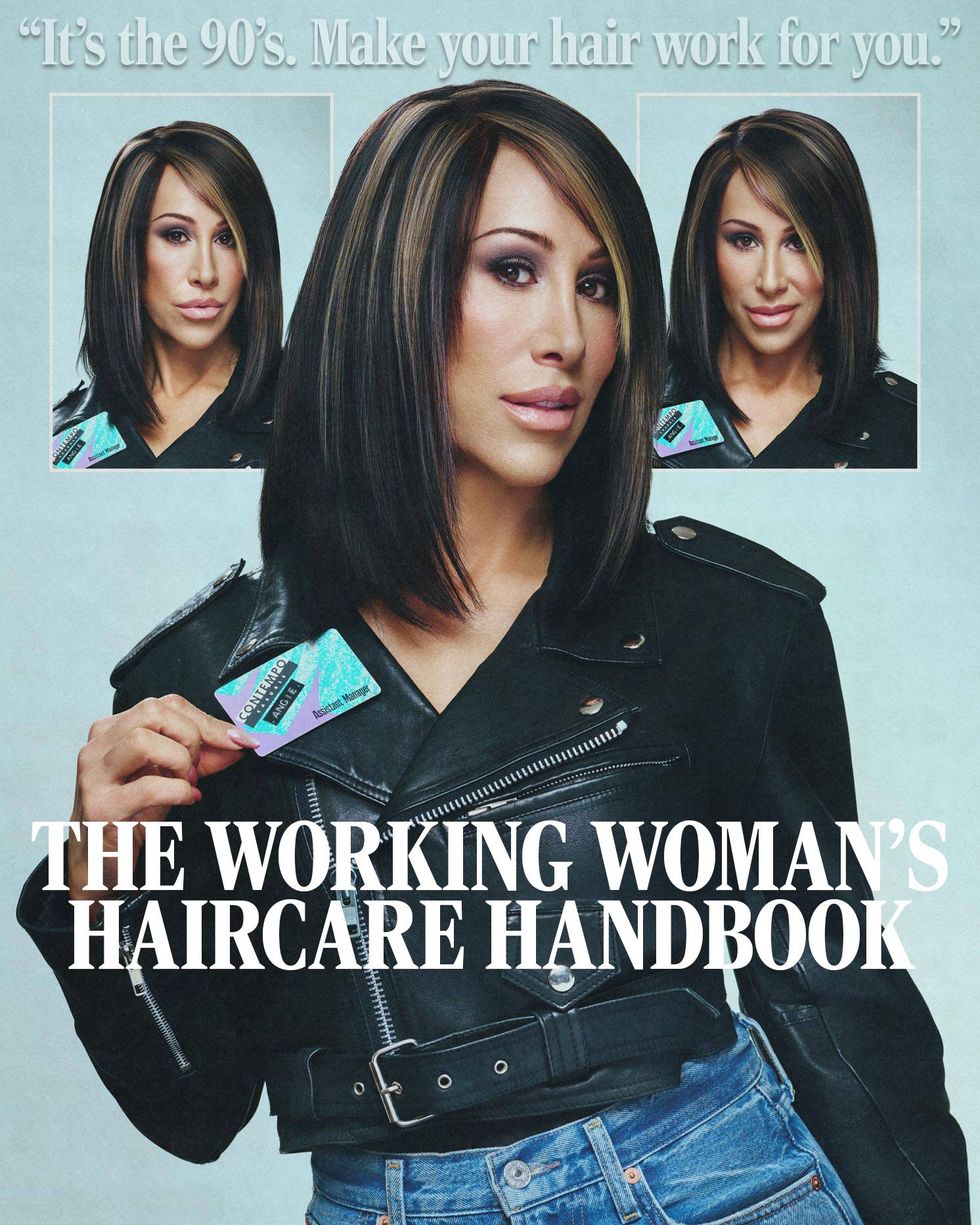
Kérastase Mousse Bouffant and Kérastase Elixir Ultime
This article is a collaboration between Kérastase and PAPER
Creative Direction and Story by Joan Summers
Photography by Gustavo Chams
Hair Artist: Gregg Lennon Jr. using Kérastase Mousse Bouffant, Kérastase Elixir Ultime and Kérastase Gloss Absolu Glaze Drops
Makeup Artist: Alexis George
CCO & CEO: Brian Calle
Executive Creative Director: Jordan Bradfield
Vice President of Brand Partnerships: Jamie Granoff
Executive Creative Producer: Angelina Cantu
Entertainment Editor: Joan Summers
Graphic Design: Jewel Baek
Location courtesy of Lunatic Fringe
From Your Site Articles
- ‘The Real Housewives of Salt Lake City’ Are Crashing Out ›
- 'The Real Housewives of Orange County' Are Totally Doomed ›
- Can Somebody Please Help Lisa Barlow? ›
Related Articles Around the Web
MORE ON PAPER
Music
Janelle Monáe, HalloQueen
Story by Ivan Guzman / Photography by Pol Kurucz/ Styling by Alexandra Mandelkorn/ Hair by Nikki Nelms/ Makeup by Sasha Glasser/ Nails by Juan Alvear/ Set design by Krystall Schott
Story by Ivan Guzman / Photography by Pol Kurucz/ Styling by Alexandra Mandelkorn/ Hair by Nikki Nelms/ Makeup by Sasha Glasser/ Nails by Juan Alvear/ Set design by Krystall Schott
27 October
Music
You Don’t Move Cardi B
Story by Erica Campbell / Photography by Jora Frantzis / Styling by Kollin Carter/ Hair by Tokyo Stylez/ Makeup by Erika LaPearl/ Nails by Coca Nguyen/ Set design by Allegra Peyton
Story by Erica Campbell / Photography by Jora Frantzis / Styling by Kollin Carter/ Hair by Tokyo Stylez/ Makeup by Erika LaPearl/ Nails by Coca Nguyen/ Set design by Allegra Peyton
14 October
Entertainment
Matthew McConaughey Found His Rhythm
Story by Joan Summers / Photography by Greg Swales / Styling by Angelina Cantu / Grooming by Kara Yoshimoto Bua
Story by Joan Summers / Photography by Greg Swales / Styling by Angelina Cantu / Grooming by Kara Yoshimoto Bua
30 September
Music
Demi Lovato Is No Joke
Story by Ivan Guzman / Photography by Jason Renaud / Styling by Chris Horan/ Makeup by Loftjet / Set design by Allegra Peyton
Story by Ivan Guzman / Photography by Jason Renaud / Styling by Chris Horan/ Makeup by Loftjet / Set design by Allegra Peyton
15 September
Music
Role Model Isn’t In Kansas Anymore
Story by Tobias Hess / Photography by Richie Talboy / Styling by Angelina Cantú / Grooming by Jerrod Roberts / Set design by Allegra Peyton
Story by Tobias Hess / Photography by Richie Talboy / Styling by Angelina Cantú / Grooming by Jerrod Roberts / Set design by Allegra Peyton
14 August

